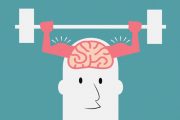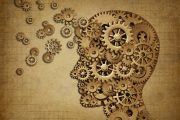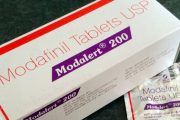It’s your first class of the day. Students are slowly starting to fill the benches. You have a well put-together lesson plan that is a balanced mix of reading, experiments, and hands-on activities. You’re ready to start teaching.
As you look at the faces staring back at you, what do you see? Bright and eager eyes, ready and expectant of a positive learning experience? Or is everyone distracted, fidgety and barely able to stay awake?
How does the classroom look mid-morning? And how about by the afternoon? Are the students filling the room looking rather anxious and stressed? Maybe even hopeless and depressed?
Experts say internal environments within each student’s brain is a crucial part of learning and may be even more important than external classroom conditions. No matter how hard you try, and how positive of a surrounding you try to create, you may find some students are just unable to learn. This inability may be due to poor hydration and inadequate nutrition.
Inside your student’s brain, a fundamental neurochemical process is taking place. The process of learning. For the brain to make new connections, solve problems and find the meaning in things, it internally requires lightning fast electrical impulses. As memories form, entire networks of brain cells grow and change shape.

That great feeling each student gets when they realize they understand whatever it is you’re teaching, that’s as much a biochemical process as it is an academic one. When a student feeds the brain with water and nutritious foods, they optimize its environment. They give themselves the right tools to properly engage in class and reach their full potential.
Many students fail to realize this fact and instead choose to pursue nootropics or smart drugs to maximize their learning abilities. There are, of course, legitimate reasons to be taking modafinil online and other stimulants or wakefulness-promoting agents. But the modafinil vs. adrafinil as a learning tool debate can be overheard in many university halls. If students truly understood how to get the most out of their brains with nutrition, cognitive enhancers may not be as big of a problem as they are.
What the Brain Needs
Your brain is smaller than you think, on average only about 6 inches or 15 centimeters long. It is mainly composed of fat and water and surprisingly soft to the touch.
A neuron is the basic working unit of the brain. Neurons are what drives everything, from our ability to learn and think, to how we feel. To properly function, neurons need water and lots of it. They also require a good amount of protein, complex carbs, healthy fats and micronutrients (vitamins and minerals). These are all things which fuel the learning functions of the neurons.
What Are Neurons
A neuron is a cell. Its shape resembles a bit a reaching arm with all its fingers spread out. The fingers are called dendrites. Their purpose is to attach to and receive information from other neurons. That information is then sent down the arm, called the axon, where another neuron can pick it up. The connection one cell’s dendrite makes with another’s axon is called a synapse.
There are many ways a single neuron can connect with other cells. It can attach to the same cell multiple times, connect with more distant cells by growing extensions, and even connect with several other cells at once by growing more dendrites.
Your brain is incredibly responsive and dynamic. Whenever it needs to make a record of and integrate new information it simply makes new connections. Old links no longer used are in time removed.

The process of building and removing connections is what happens both in a classroom environment, as it does in everyday life. Each thing experienced and learned gets integrated into the brain and affects both overall knowledge as well as personality.
The material and energy required to make and destroy neuron connection come from the food and liquids we consume.
How Neurons Talk
After two neurons make a connection, they talk to each other with a process called neurotransmission. Every time you think, speak, feel an emotion or move, brain chemicals called neurotransmitters are released via electrical impulses. These chemicals travel over the synapse, bringing with them information from one cell to the next.
This communication between neurons is the basis of learning. There are hundreds of neurotransmitters. Some connect different types of memories, others associate newly learned things with those learned previously. Other neurotransmitters still are responsible for mood, behavior, and alertness.
And from where do all these neurotransmitters come? They are produced by the neurons using protein, minerals, and vitamins from the food you eat.
Neuron Protection
Neurons can sustain damage from toxins that make their way into your system. These toxins can either come from the environment or form inside the body. How are cells be protected? With antioxidants that come ideally from food or alternatively from neuroprotecting nootropics supplements.
Anyone who has a diet low in antioxidants is much more likely to experience various illnesses and disease. If you recall, the brain is to a great part composed of fat. This fact makes it especially susceptible to damage from toxins, and a high amount of antioxidants is required to ensure adequate protection.
How to Feed the Brain
-
Healthy Fats
It’s not so long ago that you were told to avoid consuming fat. It was considered to be the unhealthy part of any diet. Today, we know all about essential fats and understand how important they are to our system and, more specifically, the brain.
The brain is built, for the most part, out of fatty membranes. About 60% of all its solid matter is fat, and the vast majority of that fat is polyunsaturated. Since the structure of polyunsaturated fats has very few, if any, double bonds, their molecules are quite flexible.
These fats play a significant role in maintaining dynamic and flexible cell membranes, allowing them to send and receive information. They also benefit cell energy production and water storage.
Cholesterol is a well know saturated fat. Though more often associated with heart attacks and vascular disease, its presence is vital for a healthy brain. Cholesterol does not need to be acquired from your diet, as the body produces sufficient quantities of it on its own.
Fats can also provide very much needed energy for the brain as they undergo various transformations inside the neurons. The best fats to include in your diet are Omega-3 and Omega-6 oils. Fish, dark leafy greens, seeds, and nuts contain the former. Good sources of Omega-6 include corn, safflower and borage oils. In a pinch, certain supplements also supply these.
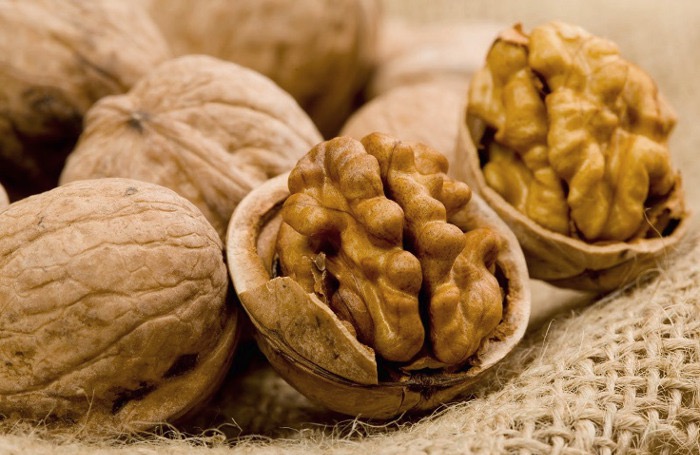
What about other types of fats, like trans or saturated? Both can be problematic as they can displace the healthy fats. The result can be stiff, not flexible cell membranes. A stiff membrane will prevent cells from changing shape, a vital function for proper cell communication.
Both trans and saturated fats can also impede the flow of oxygen to the brain and the removal of waste away from it. They clog up the circulation systems. The worse case scenario is when both these fats are present in a low magnesium diet. Such a combination can result in the formation of plaque and further damage to the brain.
Trans fat will negatively impact internal brain communications by accumulating in synapses. They can also gather in the eye’s retina and worsen eye to brain coordination.
A study out of the Medical University of Southern Carolina showed how rats which consumed a diet high in trans fats demonstrated learning difficulties. They learned at a reduced pace and more frequently made errors, especially when dealing with more complicated tasks. They measurable performed about five times worse than their counterparts which received soybean oil.
Similar behavior and results are observed in humans. A student eating fish, eggs, nut butter, lean meats and olive or safflower oil based salad dressing will develop a much different brain from a student whose diet consists of mostly fried, high trans fat meats, french fries, and crackers.
-
Protein
Proteins are providers of amino acids, which are the building blocks of neurotransmitters and some support structures in neurons. Tryptophan, found in milk and turkey, is an amino acid which is used to produce the feel-good neurotransmitter serotonin. Tyrosine, an amino acid which can come from a variety of sources like meat, avocados, and almonds makes the neurotransmitter dopamine.
In addition to the above, amino acids also turn into vital antioxidants which protect cells from toxins damage. They also create receptors which are embedded in cell membranes and help with neuron communication.

Protein can come from a wide variety of food sources, both healthy and unhealthy. Some nuts, for example, make excellent sources of protein. In addition to having protein and healthy fats, almonds also have many other beneficial vitamins and minerals. On the flip side, heavily processed peanuts, frequently found on store shelves, lack the benefits. In fact, artificial flavoring and coloring added to such products can be quite harmful. So, not all nuts are created equal.
Similar things can be said of just about any other food: baked vs. deep fried chicken, broiled cold water fish vs. battered fried fish, plain organic yogurt vs. artificially colored and sweetened yogurt. The list goes on and one. The value of the protein source is not something to be ignored.
-
Carbohydrates
Carbs are simply an energy source for the brain. Sugar specifically is the primary fuel. You must have surely more than once experienced the boost in energy you get from consuming something sugary.
The problem is most students eat too much sugar. This is especially an issue with breakfast. Consuming high quantities of sugar first thing in the morning will cause a quick burst of energy and then degrade to drowsiness, poor concentration, restlessness, and headaches. These symptoms may come as early as mid morning, and almost certainly by the early afternoon.
Rising bloodstream sugar levels result in the release of insulin by the pancreas. Insulin quickly steers sugar into cells to keep the blood sugar level stable. When this occurs inside of a student’s body, they become drowsy. The more sugar is consumed, the worse the problem gets.
The real kicker is this often become a cyclical issue. As a student feels drowsiness set in and their energy levels drop, some may reach for even more sugar to get an energy boost the feel they need. This once again sets the entire process in motion. Others make take refuge in nootropic supplements or wakefulness promoting agents to get them through the day, also not an ideal solution.
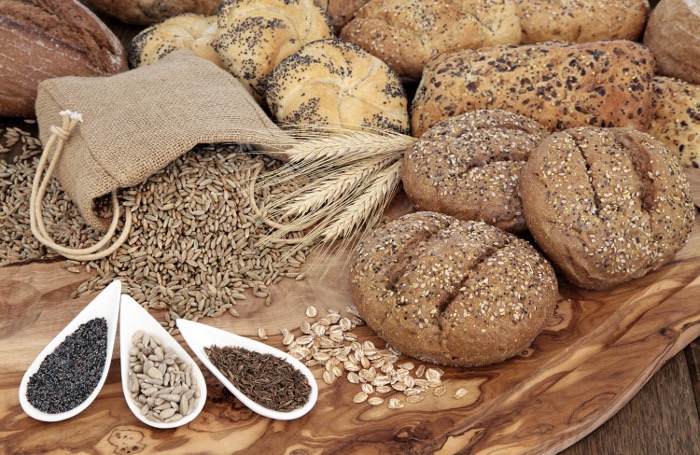
Any student who starts the day with a large glass of sugary juice followed by, say, a donut for a snack and several soda drinks throughout the day is in trouble. Think of the effort required from the student, not to mention their teacher, to overcome the effects of all that sugar and the insulin response that follows.
The answer is quite simple. Every meal and snack needs include complex carbohydrates. Whole grain products need to take priority over ones which contain refined sugars. Those same whole grain products also include fiber. Fiber will not only reduce the absorption rate of sugar but is also introduces healthy nutrients like Vitamin B, Vitamin E, and many others.
All refined sugar will be missing these vital nutrients unless they are added back in after the fact. Not ideal, but better than nothing. Regardless, refined sugars are absorbed much quicker than complex carbs, resulting in a greater and faster release of insulin into the bloodstream.
The glycemic index (abbreviated as GI) measures how quickly food turns into sugar. The lower the GI, the smaller the insulin response, the better. Food high on the GI scale will not only cause drowsiness but due to the stress it causes on the pancreas, may lead to type 2 diabetes in the long run. High glycemic index foods can also lead to obesity, which will further stress a student’s system and impair their ability to learn.
-
Micronutrients
Our brains do not require large quantities of micronutrients, but they are nonetheless essential for good brain health. There are micronutrients which are key.
Vitamins in the B family help to produce energy for your brain cells. They also help make several neurotransmitters, including the one which gives you the sense of well being, serotonin. Vitamin B is found in most leafy greens as well as in grain hulls.
GABA, or Gamma-amino butyric acid, is vital for the brain to maintain proper focus and concentration.
Zinc, a mineral, also helps produce serotonin as well as GABA. It is also a critical component to learning. Zinc is essential to the brain when it builds new and manages existing pathways. It is used in the creation and pruning of dendrites and cell repair. Memory formation also heavily relies on zinc, which is why it is found in large quantities in the area of the brain that processes short and long term memory, the hippocampus. An abundant source of zinc is red meats, as are most nuts and seeds.
Another mineral, calcium, regulates transmissions from nerves and the brain’s electrical environment as a whole. It also helps to keep the brain clear of certain harmful substances by either getting rid of or binding them.
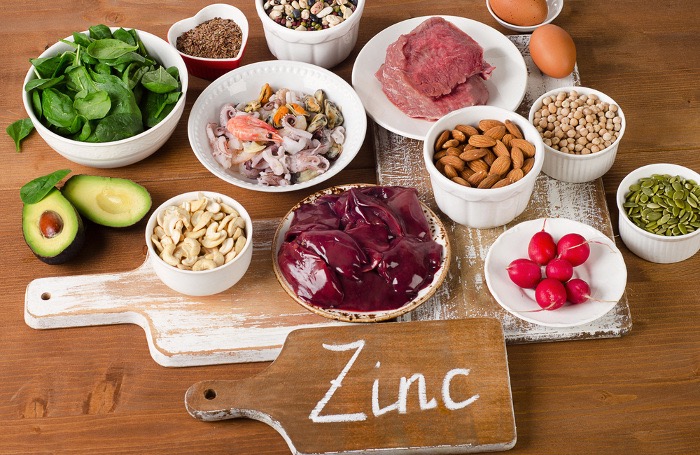
Phytonutrients is yet another group of micronutrients with enormous health benefits for the brain. It is sourced from plants where it’s function is to give color to fruit and vegetables. Phytonutrients are from where the recommendation to “eat your colors” comes. They are not directly responsible for the production of any neurotransmitters. But, phytonutrients are vital for protecting and repairing neurons. They neutralize various free radicals which may otherwise damage them.
The absolute best way to ensure a student gets all these vitamins, minerals and phytonutrients is not by using smart drugs or nootropics, but rather by keeping a diet high in both fruit and vegetables. Most don’t come close to keeping the currently recommended 5 to 9 service a day. In fact, fewer than 15% do.
Not getting these necessary nutrients impacts both how well the brain functions and overall health. Student or not, everyone should be encouraged to include a variety of fruit and vegetables from all color groups in their food to get the vitamins, minerals, and phytonutrients necessary.
-
Water
Something interesting neurons do is they store water. They do so in tiny little structures called vacuoles. The importance of water for brain function and health cannot be understated. It keeps the tone of membranes needed for optimal neurotransmission. It enhances blood circulation and helps move waste out of the brain. Water also keeps the brain cool and prevents it from overheating, which could otherwise cause a visible decline in cognitive abilities and even longer term damage.
Most students will go for extended periods without having water, which leads to dehydration. To compound the problem, when they are thirsty, instead of drinking water they choose to reach for some form of a sweetened drink.
By the time a student feels thirst, they may have lost close to 2% of their body weight due to water loss. More shockingly, they may also be experiencing up to 10% in cognitive decline. Other than reducing cognitive abilities and concentration, dehydration will also result in fatigue and dizziness. Any level of dehydration is enough to be detrimental to classroom performance.

All students should be encouraged to drink water. There are many ways to implement this. An official structured water break is one option. Students can also be urged to keep a bottle or glass of water at their desk and drink throughout the day. The aim is to have them take in at least eight glasses of water per day, with half of that amount consumed while they at school.
There Is No Substitute for Nutrition
Healthy living starts with proper nutrition and hydration. There simply is no way around it. The best way for any student to excel in their education is to make and maintain healthy nutritional choices. By helping them understand why that is the case and guiding them along the way, educators will ensure their student’s success and overall well-being.
An educator at any level has the ability promote these habits by doing any or all of the following.
- Have all students bring water with them to class or have several scheduled water breaks throughout the day.
- Drive home the importance of having only healthy snacks and treats. Whole grains, fruit, and vegetables should be at the top of the list.
- If the school has a cafeteria, teach students how to pick the healthiest options from the menu.
- Most schools have a wellness policy. Be aware of it, contribute to it and drive changes to it where necessary.
- When it makes sense, work nutrition education into your teaching and the curriculum.
By ensuring students eat healthily and stay well hydrated, you will have a classroom full of pupils who are more attentive, motivated and enjoy learning.

